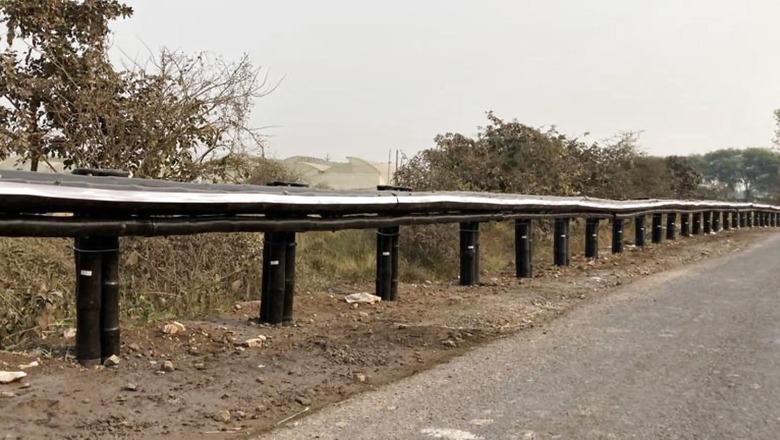
views
Dubbed ‘Bahu Balli’, Maharashtra got the world’s first crash barrier made out of bamboo, the ministry of road transport and highways announced on Saturday.
This 200-m bamboo crash barrier has been installed on the Vani-Warora highway in the state’s Vidarbha region. Before installation, Bahu Balli underwent rigorous testing at various government-run institutions – such as National Automotive Test Tracks (NATRAX) in Pithampur, Indore – and was rated as Class I during the fire rating test at the Central Building Research Institute (CBRI) in Roorkee.
Additionally, it has also been accredited by the Indian Road Congress. The recycling value of the bamboo barrier is 50 to 70 percent, whereas that of a steel barrier is 30 to 50 percent.
“An extraordinary accomplishment towards achieving ‘Atmanirbhar Bharat’ has been made with the development of the world’s first 200-metre-long bamboo crash barrier, which has been installed on the Vani-Warora Highway in Vidarbha, Maharashtra,” the ministry said.
The bamboo species used to make this barrier is called bambusa balcooa, which has been treated with creosote oil and coated with recycled high-density polyethylene (HDPE).
According to the ministry, this achievement is remarkable for the bamboo sector and India as a whole, as this crash barrier offered a perfect alternative to steel as well as addressed environmental concerns and their impact. It is a rural and agriculture-friendly industry in itself, making it a more significant milestone, it added.
Why are crash barriers important?
Crash barriers are a crucial part of road safety. They are used to avoid major or even fatal accidents on the highway network. Crash barriers of the appropriate type are installed at accident-prone locations, especially on the valley side of hilly roads, high embankments and sharp/blind curves.
There are different factors that play a role in determining the type of barrier to be proposed for a particular situation or stretch. These barriers are useful in containing, redirecting and absorbing impact energy of vehicles and reducing severity of accidents.
According to the ministry, the density of traffic and its compositions should be considered for specifying the containment level of the crash barrier to be provided. Other factors involved in the selection of a barrier include performance capability, deflection on impact, site condition, compatibility, installation and maintenance cost.
To reduce the severity of any accident, a vehicle should remain upright after the impact. When the vehicle hits a crash barrier, it should not deflect for a distance of more than the space available for deflection.
The crash barrier should have adequate height and length so that it is able to withstand the impact of a vehicle without being thrown off.
Read all the Latest India News here

















Comments
0 comment